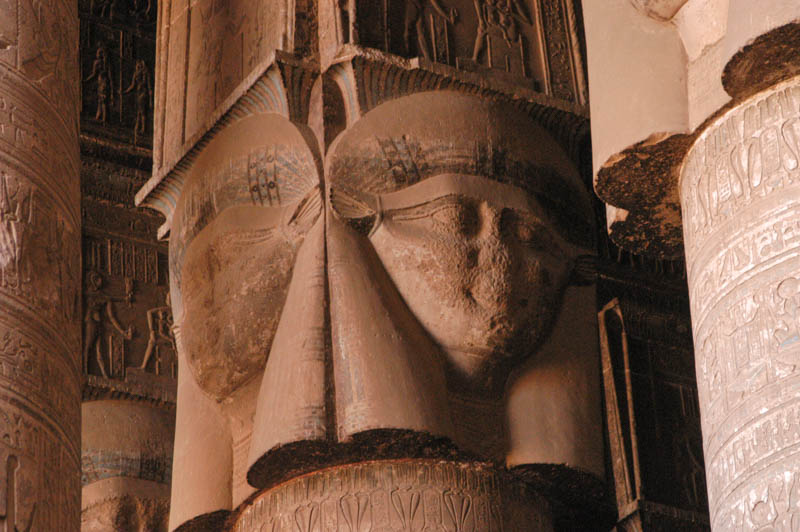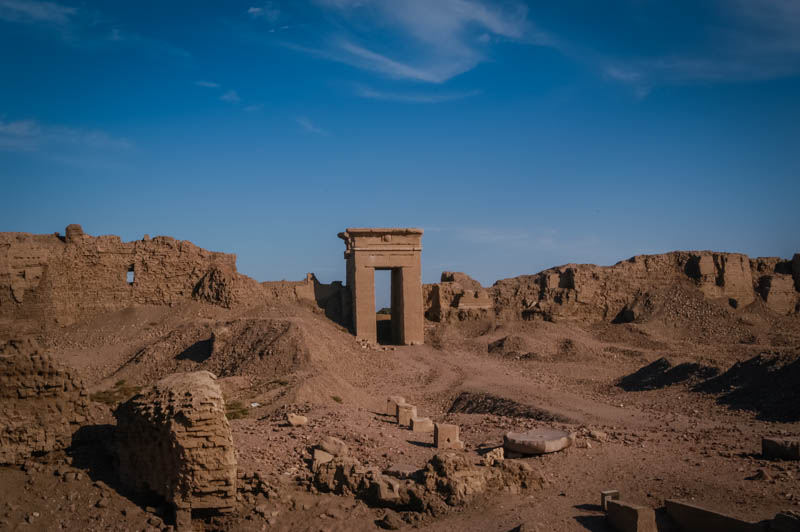Another of the cities in Middle Egypt that we visited by convoy was the small town of Dendara, the site of one of the most complete, largest temples in Egypt. The town is between Qena and Sohag — both of which are usually considered poor tourists choices — and is reached from either city by taxi to the village (about a half mile walk) or directly to the temple.

Dendara was the cult-center of the goddess Hathor, and there are remains on the site of buildings much older than the existing temple (which is Ptolemaic). Some building stones remain from the 4th Dynasty.
The temple here is just beside the village — our guide for the day, Besam, was from Dendara and when he took us up on the roof he pointed out his family’s house. Of all the temples we visited, this was the least ruined, which was a treat in itself.
The site is a bit confusing, since it has been built up and added to for centuries. Along with the enormous Temple of Hathor is a Roman Mammisi, a coptic church built from the stones of the ruined temple buildings, a smaller mammisi (birth house) of Nectanebo. A much ruined Sanitorium nearly abuts the walls and far to the south, near the main entry of the temple, is the sunken Sacred Lake and the Birth Temple of Isis.

It’s definitely worth a few hours wandering around the temple grounds and inside the sanctuaries — and bring a flashlight, this is one of the few temples with a fully finished roof still in place. Inside, ti can be dark even with the electric lights.